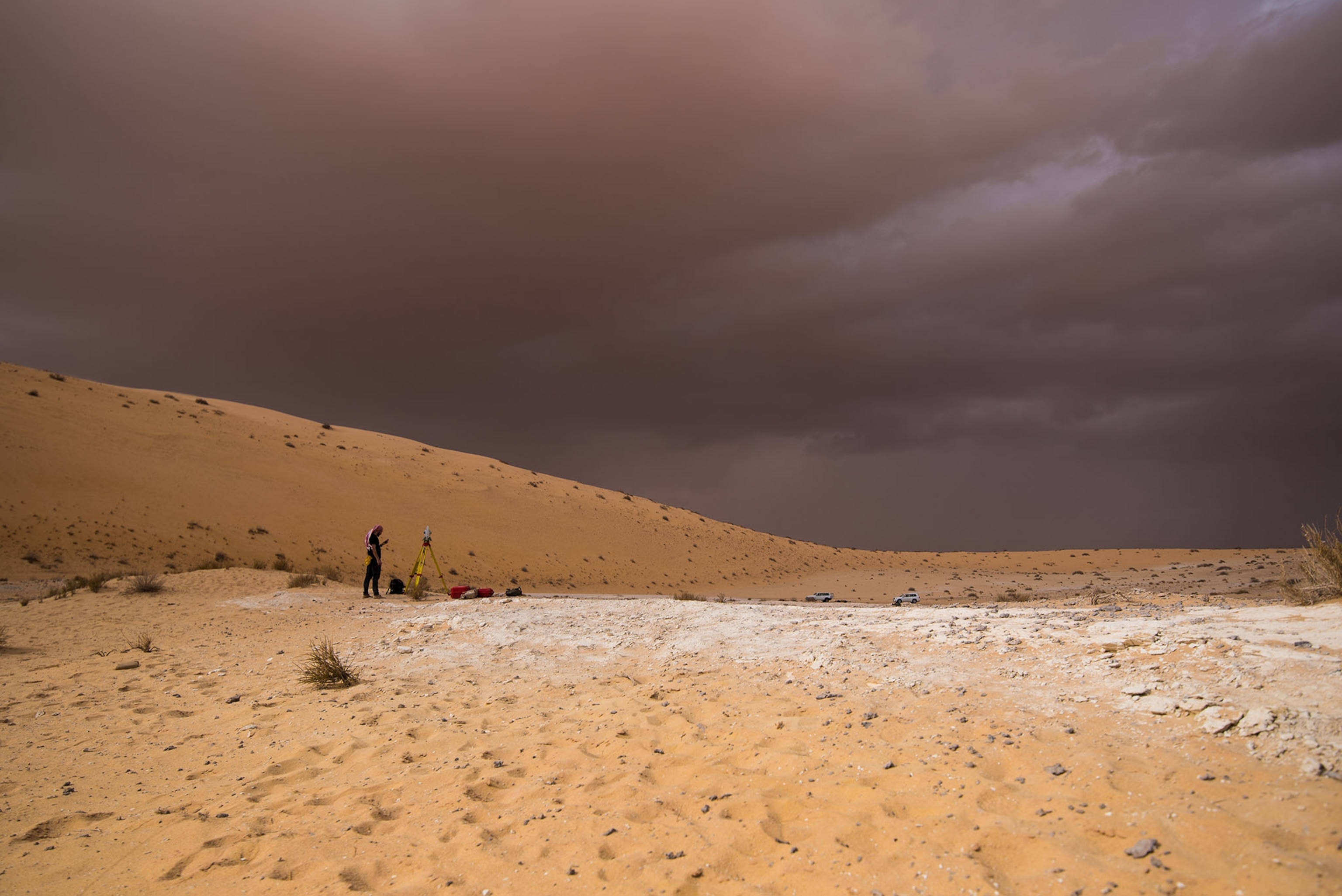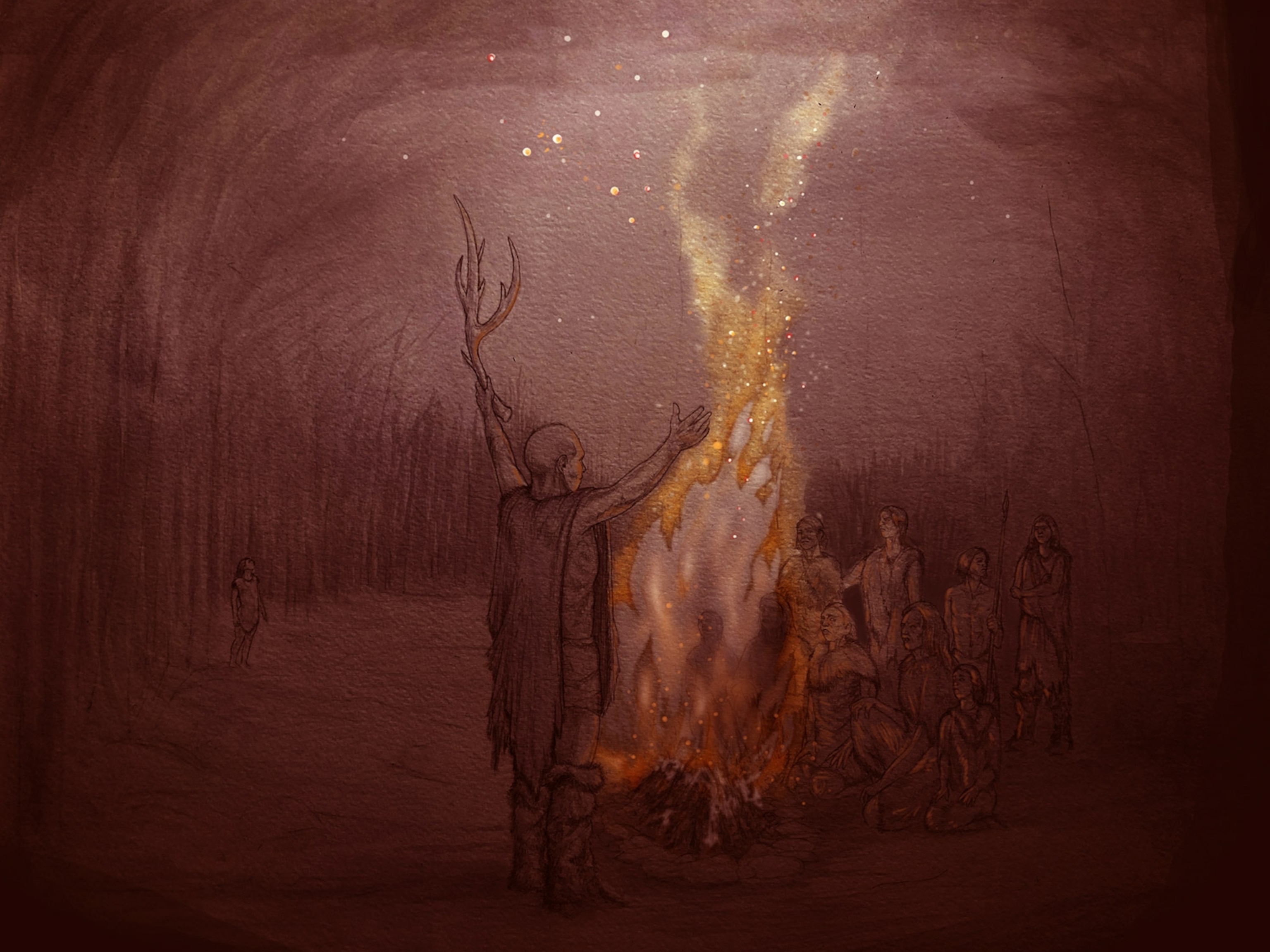
88,000-Year-Old Finger Bone Pushes Back Human Migration Dates
The find, from a prehistoric lake site in Saudi Arabia, challenges the idea that modern humans did not leave Africa until 60,000 years ago.
More than 85,000 years ago, the Arabian peninsula looked very different from the vast, sandy expanse people see today.
The region was a lush grassland, seasonally greening with every rainy period, and dotted by hundreds of freshwater lakes. Researchers have found evidence in the sands of aquatic- and semi-aquatic mammals, such as hippos, which are more commonly associated with the African subcontinent. They've also found stone tools the suggest an early human presence on the peninsula, but no direct fossil evidence—until now.
A single human finger bone discovered in 2016 at an ancient lake site in Saudi Arabia called Al Wusta has now been dated to approximately 88,000 years ago, according to a new study in the journal Nature Ecology and Evolution.

To find the remains of Saudi Arabia's distant, greener past, archaeologists began by looking at satellite images of the region for evidence of prehistoric bodies of fresh water.
“We have found 10,000 ancient lakes in Arabia. We have visited about 200, and about 80 percent have evidence of archaeology,” says Michael Petraglia of the Max Planck Institute, the project leader and an author on the new paper that details the find.
Many of the region's lakes would have been seasonal, notes Petraglia, periodically shrinking during dry seasons and refilling during the monsoon season. Al Wusta, however, was likely a year-round source of fresh water. According to study co-author Huw Groucutt, archaeologists have also found hundreds of stone tool fragments at the Al Wusta lake site.
Early Exit
Exactly when humans began to leave Africa is a matter of debate among archaeologists and paleoanthropologists. Many say there is no reliable evidence for mass migration north and east out of the African subcontinent until 60,000 years ago.
In 2007, Petraglia controversially argued that modern humans were present as far east as India by 74,000 years ago.
“I’ve been embroiled in debates for more than 10 years,” he says.
“We were arguing that Homo sapiens made it to Southern Asia before that date. That was based on stone tools, but I couldn’t support that with fossils,” he adds.
In 2014, he set his sights on the Arabian Peninsula. As a former grassland that could have supported hunter-gatherers, he theorized it would have been a natural stepping stone out of Africa.
Early human fossils found in Morocco place humans in western Africa 300,000 years ago, but few fossils have been found outside the continent from before 60,000 years ago. Then, in January, a 180,000-year-old human jaw bone was found in Israel.
Both Petraglia and Groucutt say the human finger bone found in Saudi Arabia hints at more geographically diverse human migration than previously estimated.
“We’ve been to maybe a hundred different sites in Arabia, and almost every one has stone tools,” says Groucutt. “You can’t step out of a car without finding stone tools. The challenge was finding somewhere with human remains.”
The research team knows little else about the inch-long bone. Whether it belonged to a male or female and the age of the human it belonged to can't be determined without more evidence.
“Whether this finger bone came from a modern human, I just don’t think that one bone is enough to tell,” cautions John Hawks, an anthropologist at the University of Wisconsin-Madison who was not involved with the study. “So it’s too soon to say that this is the record of modern human dispersal.”
“I think it shows clearly that we should be exploring much more in the Arabian peninsula, as there will be more discoveries there.”
More Finds to Come
Petraglia agrees that Saudi Arabia, which only recently expanded access to the kingdom for foreign scientific teams, offers great potential for more significant discoveries.
“Every season we have there, we make a new discovery,” he says. “We have very big plans to continue this work on ancient lakes, and we’re going to expand our work into caves as well. It's a gold mine.”




